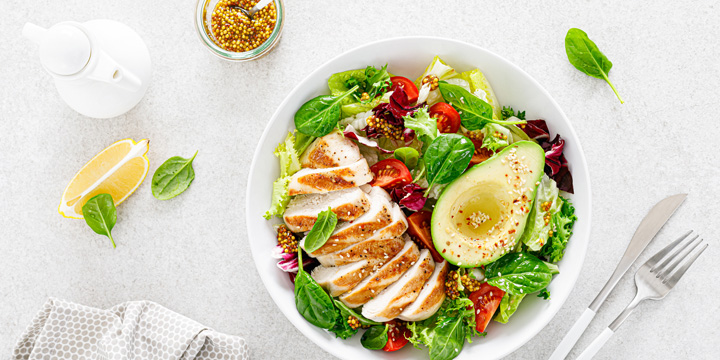
If you have just been diagnosed with diabetes, you’re probably thinking, “Okay, now what do I eat?” Or, if you have had diabetes for a while and have decided that you want to make a healthy diet part of your management plan, you may be thinking, “Where do I start?”
A healthy diet is one of the best tools for managing diabetes. Healthy eating for people with diabetes is not much different than healthy eating for any other person. The truth of the matter is that although many people have an idea of what a healthy diet is, where they struggle is making it a part of their regular routine. Changing your eating habits a little bit at a time is much easier than trying to make too many changes all at once. Read on to learn about healthy eating and decide which of the tips below fit into your life right now; then choose another goal when you are ready to change something else.
What does healthy eating mean?
Healthy eating is a plan for eating healthier over the long-term. It’s not a strict diet to be followed for a short time. A healthy eating plan requires no special foods. Instead, it includes foods that are available at any grocery store and that you’re likely already familiar with. Healthy eating means enjoying a variety of foods every day, and eating more of the foods that provide the energy and essential nutrients that our bodies need for an active healthy life, and fewer foods that have little nutrition or that can contribute to diseases such as hypertension, diabetes and heart disease. A healthy eating plan focuses on adding healthy nutrient-dense food instead of only taking away less healthy food.
Healthy eating tips you can try
Canada’s Food Guide provides healthy eating recommendations and is a great place to start:
- Eat plenty of vegetables and fruits – choose non-starchy vegetables such as green beans, cauliflower, broccoli, peppers, and mushrooms more often. Try to limit the amount of fruit consumed at one time, as larger fruit portions could raise your blood sugar. Choose whole fruit instead of fruit juice.
- Choose whole grain foods (whole grain bread, steel cut oats) instead of highly processed foods (white bread, breakfast cereals without whole grain in the list of ingredients).
- Include protein foods with your meals. Choose protein foods that come from plants (tofu, kidney beans, nuts, lentils) more often. Limit high fat protein foods such as whole fat dairy products and fatty cuts of meat.
- Prepare meals and snacks using ingredients that have little to no added sodium, sugars or saturated fat.
- Make water your drink of choice. Replace sugary drinks and fruit juice with water.
A healthy eating plan is a key part of a healthy lifestyle and should be combined with other lifestyle changes, such as physical activity, in order to get the best benefit. Be careful not to make too many changes at once, though. To ensure that healthy eating becomes a lifelong commitment, make changes gradually and choose healthy foods that you enjoy eating.



